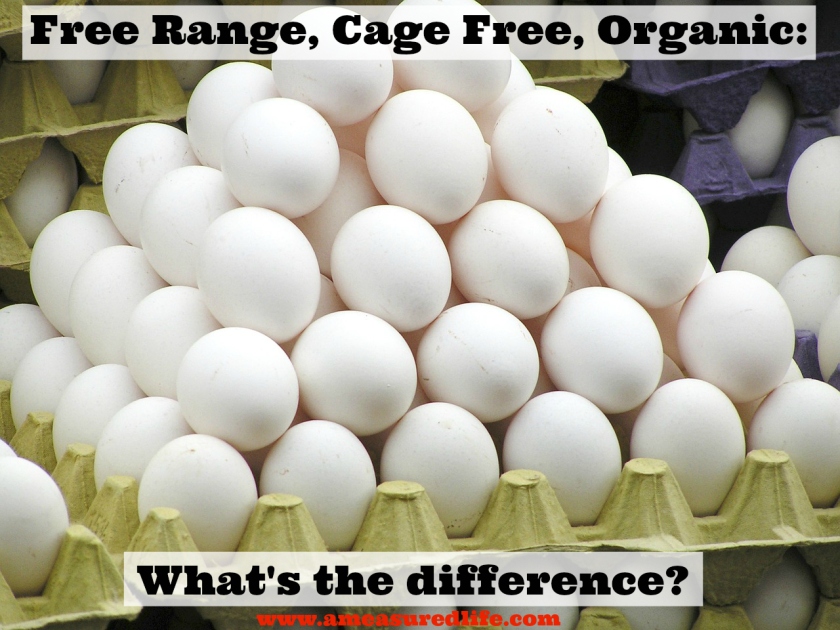 There’s a lot of marketing jargon (read: bullshit) out there on our food that may make deciding on what to eat feeling overwhelming. Something as simple as eggs can make even the most savvy shopping left feeling overwhelmed and exasperated. I won’t be going into the ethical aspects of egg production, that is best left to other blogs. But what I will be addressing is what these labels actually mean, and if they make spending the extra money worth it for a frugal household. I’ve already been clear in previous entries that buying organic or local isn’t worth the money to me, but this is less about my personal opinion and more about how we need to be more educated as to how our food is marketed to us.
There’s a lot of marketing jargon (read: bullshit) out there on our food that may make deciding on what to eat feeling overwhelming. Something as simple as eggs can make even the most savvy shopping left feeling overwhelmed and exasperated. I won’t be going into the ethical aspects of egg production, that is best left to other blogs. But what I will be addressing is what these labels actually mean, and if they make spending the extra money worth it for a frugal household. I’ve already been clear in previous entries that buying organic or local isn’t worth the money to me, but this is less about my personal opinion and more about how we need to be more educated as to how our food is marketed to us.
First, I’d like to shed some light on a widespread misconception:
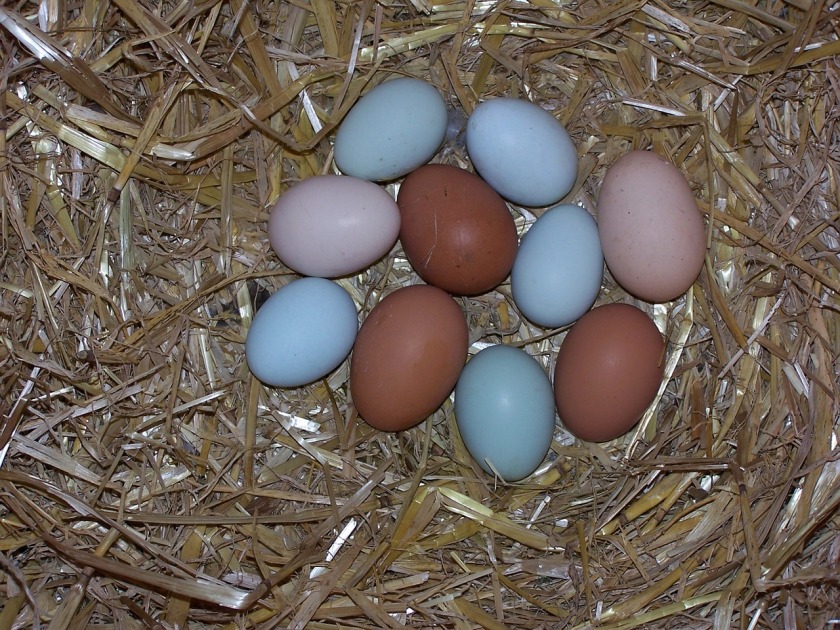 The color of an egg’s shell has nothing to do with its nutritional value. From IncredibleEgg.org:
The color of an egg’s shell has nothing to do with its nutritional value. From IncredibleEgg.org:
Egg shell and yolk color may vary. Color has no relationship to egg quality, flavor, nutritive value, cooking characteristics or shell thickness.
Now onto the various labels you’ll need to decipher in the dairy aisle.
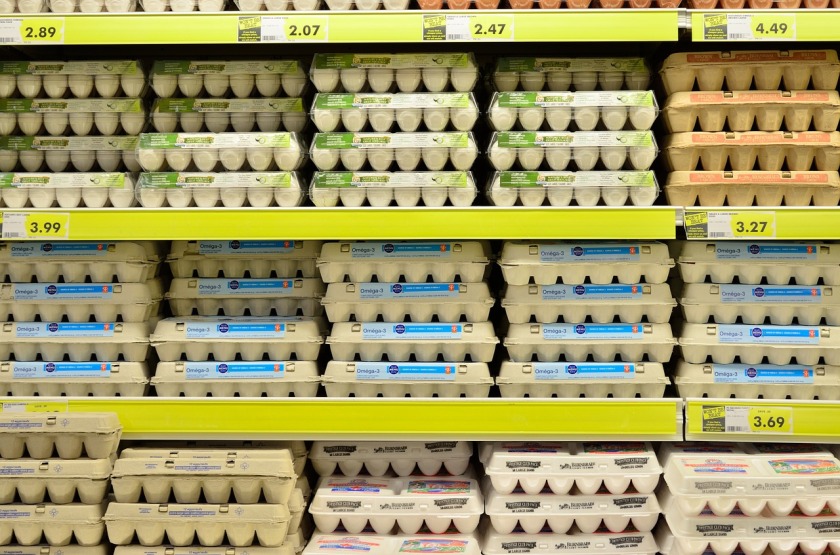 Standard
Standard
You won’t find any special labels on these. These birds are raised in battery cages, which means small cages that house from 4-12 birds, providing each bird with less than half a square foot of living space per bird. Stacks of these cages are inside of massive warehouse-style barns that house tens of thousands of birds. They are fed a mixture of corn and feed made from animal by-products. Ninety-five percent of all commercial eggs are raised this way.
Cage Free
You probably imagine hundreds of chickens frolicking happily in an open field, free to roam and peck. While the chickens don’t live in cages, like the name implies, they do live densely packed, in approximately 1 square foot of space apiece, hardly free-roaming. Animal advocates argue that this is better than standard egg production practice, since the hens are able to move around at will and have stronger bones and more feathers than caged birds, but the frequency of death was more than double in Cage Free birds, due to poorer air quality and being pecked to death by other birds (oh yeah, chickens are territorial).
Free Range
All Free Range chickens are Cage Free but not all Cage Free chickens are Free Range. Chickens that are raised Free Range are required to have access to the outdoors. The problem is there is no minimum as to the quality of the outdoor space. Some are provided nothing but small screened areas with a concrete floor. The access to these spaces may merely be small doors that can be unpleasant for the chickens to walk through because of the wind vortex created by the ventilation fans, and the chickens may choose to never access said area. The term “Free Range” in egg production has no government oversight, so producers often interpret it as they see fit.
Organic
To have the Organic stamp on the packaging, Organic eggs need to be Free Range (and thus Cage Free) fed an organic diet, and not be given any hormones or antibiotics. The USDA makes sure these standards are met, but there is no minimum requirement for space for the chickens to live, and they’re often still raised in crowded conditions.
Vegetarian Fed
For starters, chickens are not naturally vegetarian. They’re omnivores, and love to chow down on protein-rich insects along with the grains. Their diet needs to be supplemented with amino acids in order for them to remain healthy.
Pasture Raised
This is probably the best method of egg production, for the chickens anyway. The chickens are raised mostly outdoors, with access to a barn for shelter. They’re permitted to eat all sorts of insects and are given corn as feed (which may or may not be organic). Once again, there is no standard when it comes to the amount of space provided per chicken: some pasture farms can be quite crowded, while some may have quite a bit of space. Some farms may move their chickens from pasture to pasture to provide them with fresh land to scratch and peck, and some may keep them in one pasture their entire lives. There isn’t any regulation here.
Terms That Are Pretty Much Bullshit
No Hormones – it’s illegal to give hormones to poultry in the US so all eggs are No Hormones
No Antibiotics – antibiotics are rarely given to chickens in the egg production industry
All Natural – can mean whatever the producer wants it to mean, there’s no regulation
Sources
- http://www.wsj.com/articles/free-range-cage-free-a-consumers-guide-to-egg-terminology-1426100409
- http://www.npr.org/sections/thesalt/2014/12/23/370377902/farm-fresh-natural-eggs-not-always-what-they-re-cracked-up-to-be
- http://www.incredibleegg.org/where-eggs-come-from/
I hope this helps you decipher some of the more confusing marketing terms on your eggs. Which type of eggs you buy is entirely up to you, your budget and your conscious, but we should all take the time to better educate ourselves on the lingo that helps us choose.
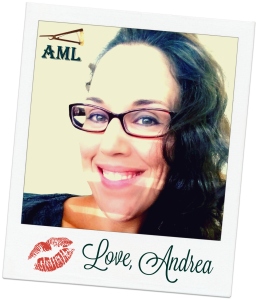





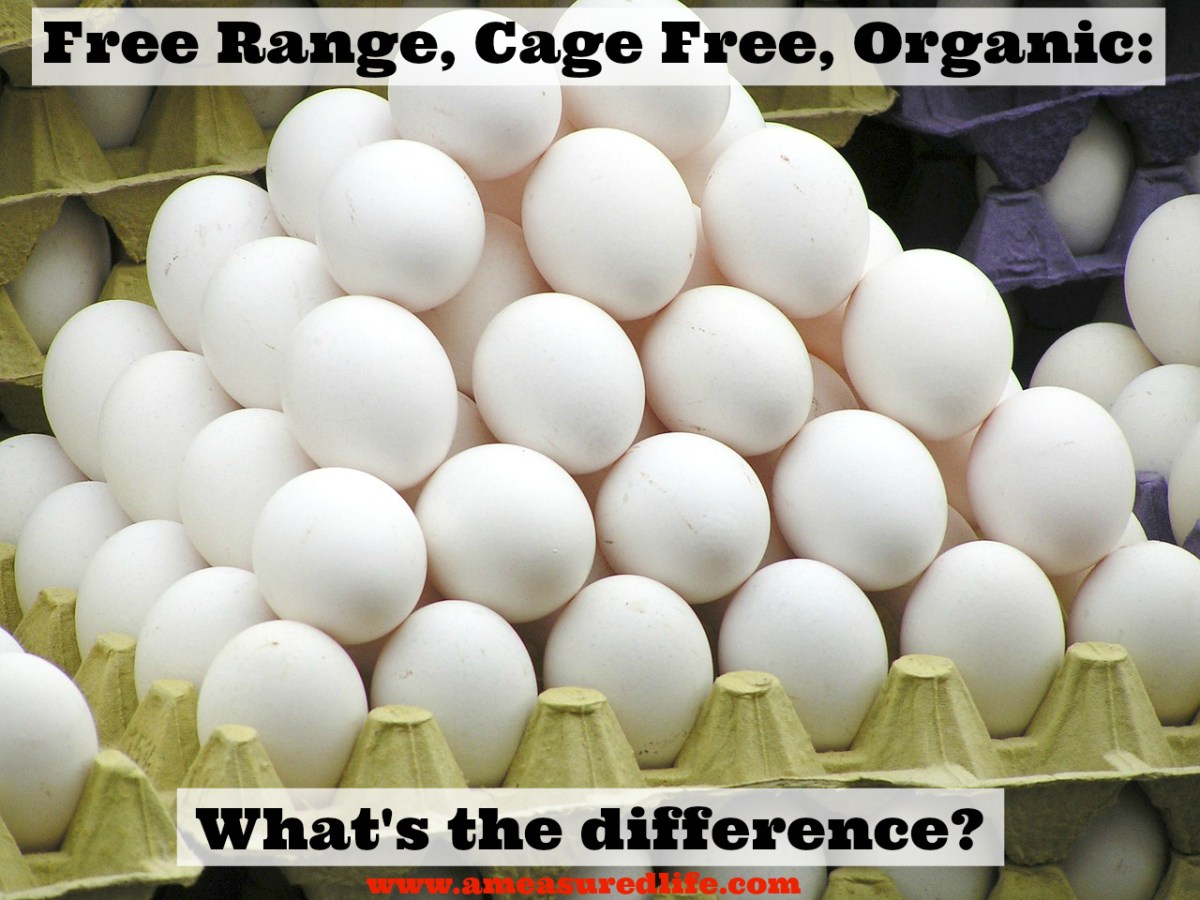
 There’s a lot of marketing jargon (read: bullshit) out there on our food that may make deciding on what to eat feeling overwhelming. Something as simple as eggs can make even the most savvy shopping left feeling overwhelmed and exasperated. I won’t be going into the ethical aspects of egg production, that is best left to other blogs. But what I will be addressing is what these labels actually mean, and if they make spending the extra money worth it for a frugal household. I’ve already been clear in previous entries that buying organic or local isn’t worth the money to me, but this is less about my personal opinion and more about how we need to be more educated as to how our food is marketed to us.
There’s a lot of marketing jargon (read: bullshit) out there on our food that may make deciding on what to eat feeling overwhelming. Something as simple as eggs can make even the most savvy shopping left feeling overwhelmed and exasperated. I won’t be going into the ethical aspects of egg production, that is best left to other blogs. But what I will be addressing is what these labels actually mean, and if they make spending the extra money worth it for a frugal household. I’ve already been clear in previous entries that buying organic or local isn’t worth the money to me, but this is less about my personal opinion and more about how we need to be more educated as to how our food is marketed to us. The color of an egg’s shell has nothing to do with its nutritional value. From
The color of an egg’s shell has nothing to do with its nutritional value. From  Standard
Standard
 In case you didn’t figure it out from the Weekly Menu post this week, The Hubs and I are headed to Chicago on Thursday to visit some family. Not only that, but we’re DRIVING and bringing Bingley! It’s going to be a whirlwind long weekend trip full of food and dogs and for me, running. We’ll be staying with my cousin Susan and her husband, and I’ll be joining her running training group on Sunday, so I’m sure I’ll get plenty of fitness in on this trip.
In case you didn’t figure it out from the Weekly Menu post this week, The Hubs and I are headed to Chicago on Thursday to visit some family. Not only that, but we’re DRIVING and bringing Bingley! It’s going to be a whirlwind long weekend trip full of food and dogs and for me, running. We’ll be staying with my cousin Susan and her husband, and I’ll be joining her running training group on Sunday, so I’m sure I’ll get plenty of fitness in on this trip.




